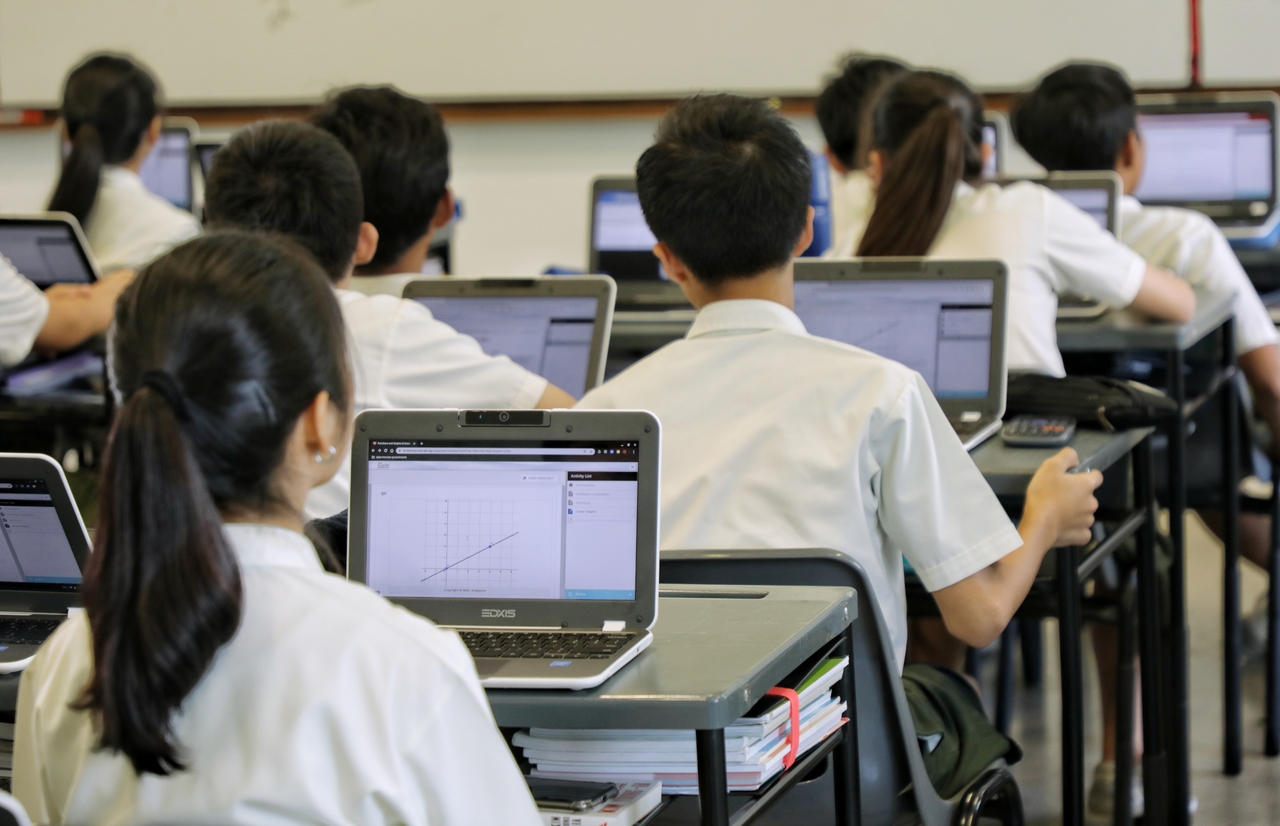Coronavirus Home-based learning
Online, offline learning as part of schooling experience
Sign up now: Get ST's newsletters delivered to your inbox

Blended learning is a mix of home-based and in-school activities that taps both online and offline approaches to learning.
PHOTO: LIANHE ZAOBAO
Follow topic:
All secondary schools, junior colleges and the Millennia Institute will implement blended learning for some levels from Term 3 next year, and at all levels by Term 4 of 2022, the Education Ministry (MOE) announced yesterday.
In addition, every secondary school student is set to receive a personal learning device (PLD) - a laptop or tablet - by the end of next year.
MOE and The Straits Times answer some burning questions from parents and students.
Q: What is blended learning and how does it differ from home-based learning (HBL)?
A: Blended learning is a mix of home-based and in-school activities that taps both online and offline approaches to learning.
MOE said yesterday that it is making blended learning a key feature of the schooling experience to further develop students' "ability to be self-directed, passionate and lifelong learners".
Full HBL involves students being off campus for a continuous period without returning to school.
On the other hand, HBL days, as part of blended learning, will be on a regular basis throughout the school year - usually for a day each time - in what the ministry hopes will inculcate the practice of self-directed learning.
It complements in-school teaching and learning.
Q: When can students expect to receive their personal learning device, and how much will it cost?
A: MOE said the devices will be distributed in two phases next year.
Phase one takes place in Term 2 and covers 86 schools, while phase two sees students from 66 schools receiving their PLDs by Term 3.
Q: How much will the devices cost?
A: MOE has not revealed how much each PLD will cost, but said most students will have sufficient funds in their Edusave accounts to pay for the devices, given the one-off top-up of $200 provided in April.
This top-up was given to all eligible Singaporean students in primary and secondary schools, including those in special education schools, in addition to annual deposits made to Edusave accounts.
"MOE and the schools are committed to working with families to ensure that no secondary school student who should have a PLD will be without access to a PLD due to financial reasons," said the ministry.
Education Minister Lawrence Wong said the ministry is also working with the Infocomm Media Development Authority to provide subsidised broadband access for students from lower-income households.

